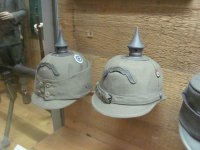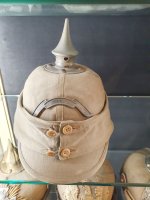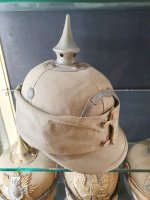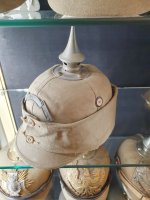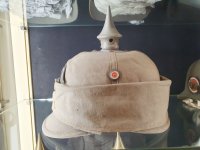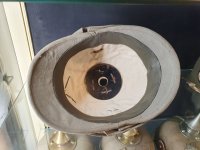Zebedeus
Well-known member
At the beginning of 1915 the Bavarian war ministry, wishing to equip its Alpine troops, with a headgear that combined the tradition of the pickelhaube with the operational needs of troops operating in very severe climatic conditions, gave orders to prepare a new type of headgear that would then be teste.
The result was a very particular headdress that certainly have hybrid characteristics between a pickelhaube mod. 15 and alpine troops' feldmutze.
These experimental bavarian helmets are particularly rare and, as far as I know, there are only 4 examples in the world.
Two of these are in the Bayerische Armeemuseum in Ingolstädt, another one is in a museum in the city of Hamburg and the last one sleeps in my collection.
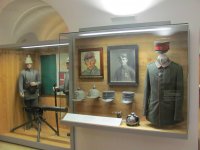
This photo, taken from the net, shows the display window of the ingolstadt museum.
The result was a very particular headdress that certainly have hybrid characteristics between a pickelhaube mod. 15 and alpine troops' feldmutze.
These experimental bavarian helmets are particularly rare and, as far as I know, there are only 4 examples in the world.
Two of these are in the Bayerische Armeemuseum in Ingolstädt, another one is in a museum in the city of Hamburg and the last one sleeps in my collection.

This photo, taken from the net, shows the display window of the ingolstadt museum.

